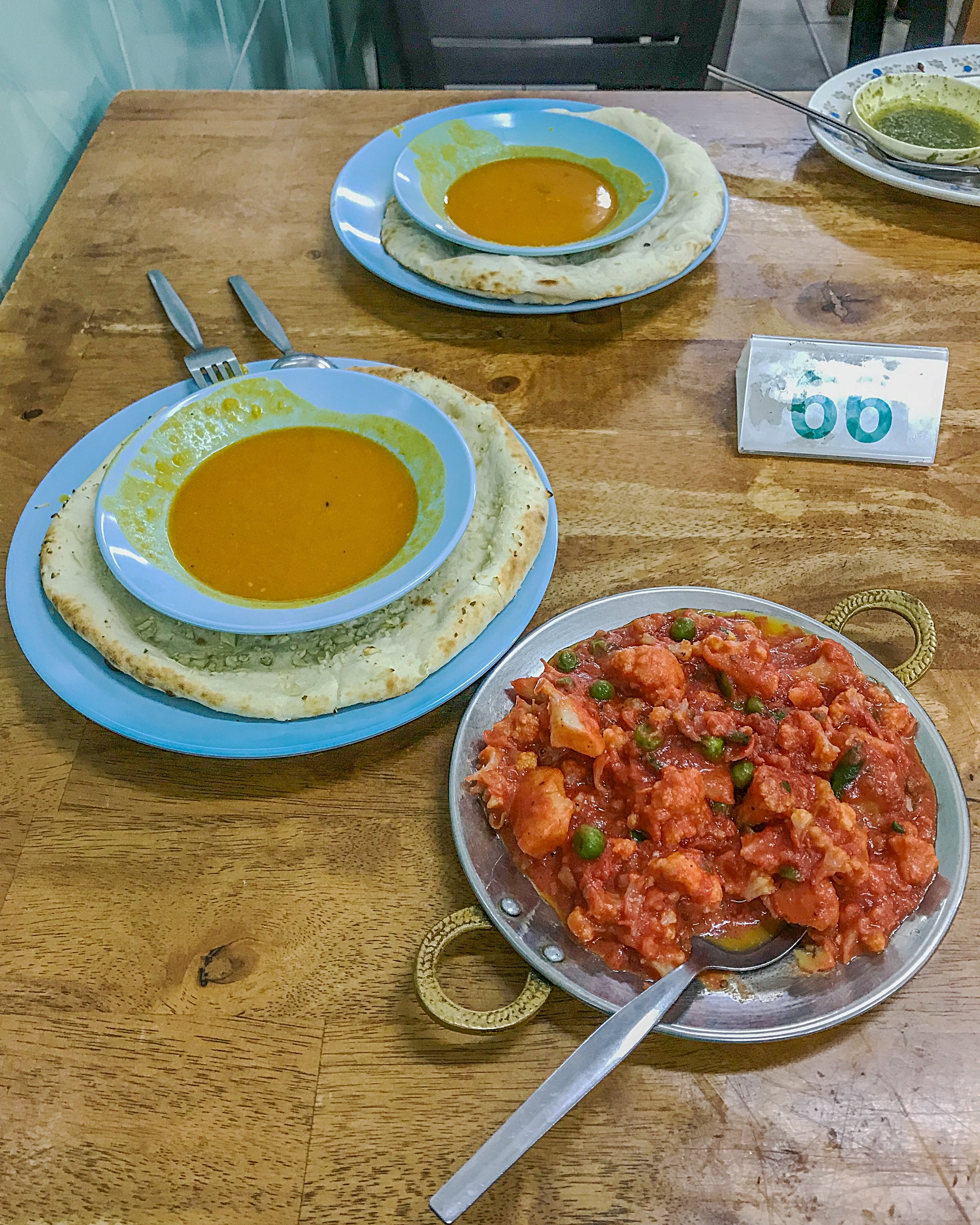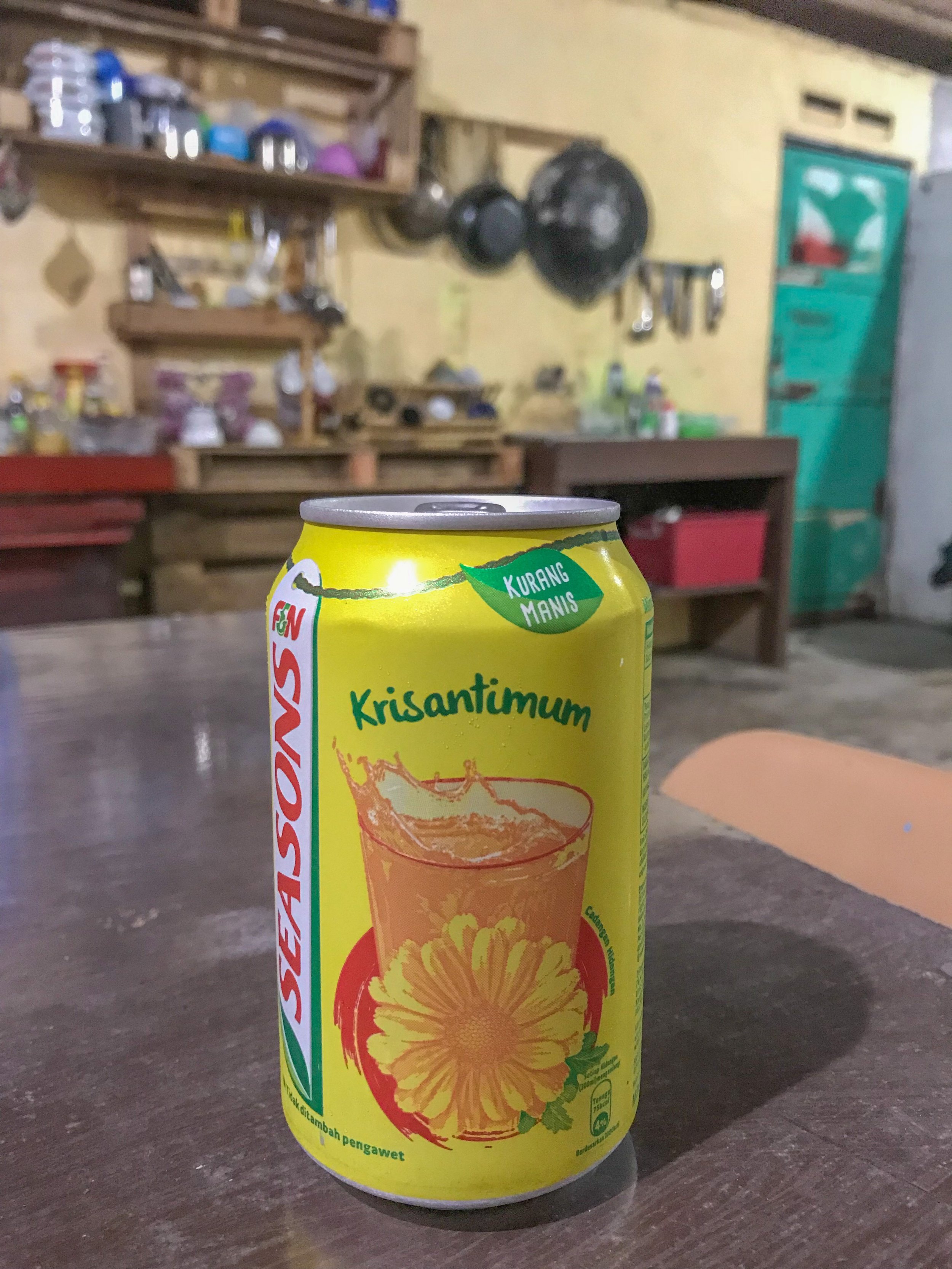What is Malaysian Food?
Understanding Malaysian Food
Spicy rice noodles and tofu in Penang, Malaysia's culinary capital
Chinese pea shoots and noodles served with plenty of garlic and chili in the Cameron Highlands
Curried cauliflower and lentil dal at Pak Putra in Melaka
Malaysia happens to be my new favorite destination in Asia and Malaysian food is one of the reasons. As a group tour leader, I’ve had many of my EscapingNY group trip participants ask me to launch new destinations and I’m considering launching off-the-beaten-path trips to Malaysia. If you'd like to learn why I love it so much, check out my Top 10 Reasons to Visit Malaysia article! If you’d like help planning a delicious, fun and food-filled trip to Malaysia, please contact me!
A Beginner’s Guide to Malaysian Food
Amazingly Diverse Malaysian Cuisine
Malaysia’s primary ethnic groups are Malay, Indian, and Chinese so “Malaysian food” consists of food from all these cultures, and has also been influenced by the Dutch, Portuguese, and British, who have all taken turns occupying the country.
Malaysia continues to receive immigrants and tourists from all over the world and clever entrepreneurs are meeting the demand for food from home. In Batu Ferringhi, along the northern coast of Penang, many Arabs, particularly from Saudi Arabi, vacation and honeymoon along the beaches and as a result, the city has become a hub for fantastic Arabic food.
Because of Malaysia's distinct mix of cultures, eaters will find uncommon fusions, such as fish served in many Indian vegetable dishes, particularly in the south. Vegetarians and vegan travelers beware, as tiny anchovies are popular and hard to spot in some dishes.
Spicy Nyonya noodles in Melaka
Anchovies hiding in the greens in Jahor Bahru
Arabic food is especially popular in Batu Ferringhi
Nyonya Noodles and Fresh Tempeh
Nyonya cuisine is the result of the unique blend of Chinese ingredients with distinct Malay/Indonesian spices and cooking techniques that originated in the region and can be found across the country. Coconut milk, lemongrass, tamarind juice, kaffir lime leaves, galangal (similar to ginger), laksa leaves (spicy Vietnamese corainder), and green pandan leaves are key ingredients, along with condiments like lime juice, fresh chilies, shallots, and cincaluk, a sour and salty shrimp paste. One of the most popular and must-try Nyonya dishes is laksa, a spicy noodle soup served two ways - sour (asam laksa) from Penang, or coconut milk-based (laksa lemak), from southern Malaysia.
Don't leave Malaysia without eating at a couple hawker stalls! These open-air food complexes house many food stalls that prepare tasty, cheap foods on site. Indian, Malay, Chinese, and fusion foods abound, and there's often at least one "American food" food stall, which tends to be limited to fried chicken and French fries. Pro tip: see what the locals are ordering and just order that! Most stalls have helpful full-color displays so you can just point at what you want if language is an issue.
Vegetarian and vegan travelers may recognize tempeh, a nutritious protein originating in Indonesia and popular in Malaysia. While tempeh is limited to vegetarian restaurants in the United States, it's enjoyed by meat eaters across Asia. The fermented, slightly nutty, soy product is often found in curries, soups, and fried noodle and rice dishes and is especially tasty when fried. It can also be found in markets, wrapped in banana leaves and newspaper!
Originally from Indonesia, tempeh is a nutritious fermented soy product popular in Malaysia
Chrysanthumum soda? Why not?
Indian naan bread bakes to fluffy perfection in Melaka
Penang: The Culinary Capital of Malaysia
Until visiting Malaysia, I assumed Penang was a city in Thailand, since "Penang curry" is one of the most popular dishes served in Thai restaurants, across the United States. Penang, in fact, is a province in Malaysia and is the country’s culinary capital. Malaysia's famous nasi goreng (fried rice) and mie goreng (spicy noodles) are served up at street carts and fine restaurants across the city, alongside countless varieties of rich and flavorful soups.
Malaysia's signature dessert is cendol, an iced sweet treat that contains droplets of worm-like green rice flour jelly (made green with pandan leaves), coconut milk, and palm sugar syrup. It is often topped with jackfruit or sweet red beans and can be found at street carts and restaurants across the entire country.
Vegetarian Food in Malaysia
Fried rice, meat skewers, seafood, curry soups, spicy noodles are popular dishes in restaurants and street carts alike. If you want more veggies, head indoors to an Indian or Chinese restaurant.
Many Indian restaurants offer buffets, which let you mix and match and proteins, starch, and veggies. These buffets are especially good for vegetarian and vegan travelers - or anyone who wants to try everything on the menu! For fun, order a thali platter (many small metal bowls filled with different dishes) served on a banana leaf!
Some Indian restaurants in Penang even serve mock meats!
Tempeh and veggies in Johor Bahru
I found anchovies in the okra in Johor Bahru!
Drinks & Quick Snacks
Malaysian drinks are as fun and varied as the entrees. Everything seems to be available in juice form, including: dragon fruit, sour plum, lychee, and even hot barley! My favorite was fresh nutmeg juice, typically sold in small plastic bottles and resembling dirty water. 😉
Take a stroll through the market to find interesting, colorful fruits like dragon fruit, jack fruit, mangosteen, lychee, and snake fruit! You're also likely to find freshly roasted chestnuts or steamed peanuts, sometimes flavored with turmeric!
Sour plum juice with rock sugar
Hot barley juice served in the Cameron Highlands
Nyonya noodles and barley juice in Penang
Snake fruit for sale in Kuala Lumpur
Snake fruit flesh
Steamed peanuts with turmeric
Don't Forget the leftovers!
I didn't usually have a kitchen in the hotels and guest houses where I stayed in Malaysia so I always brought my metal lunchbox (an Indian "tiffin") with me to fill up with leftovers to eat at home later. The spicy noodles made a GREAT breakfast, which I enjoyed in my pajamas from the comfort of my bed. I bring this metal lunchbox with me on every single trip and even take it to restaurants at home in New York City to cut down on plastic and styrofoam take-out container waste!
Planning Your Trip to Malaysia
Travel insurance is SO important while traveling and covers everything from unexpected injuries, trip cancellations, flight changes, lost baggage, or having to cut your trip short due to an emergency back home. I’ve bought World Nomads travel insurance for EVERY trip I’ve taken in the past four years and highly recommend them. For more info on why it’s important, check out my article on Why to Buy Travel Insurance.



















